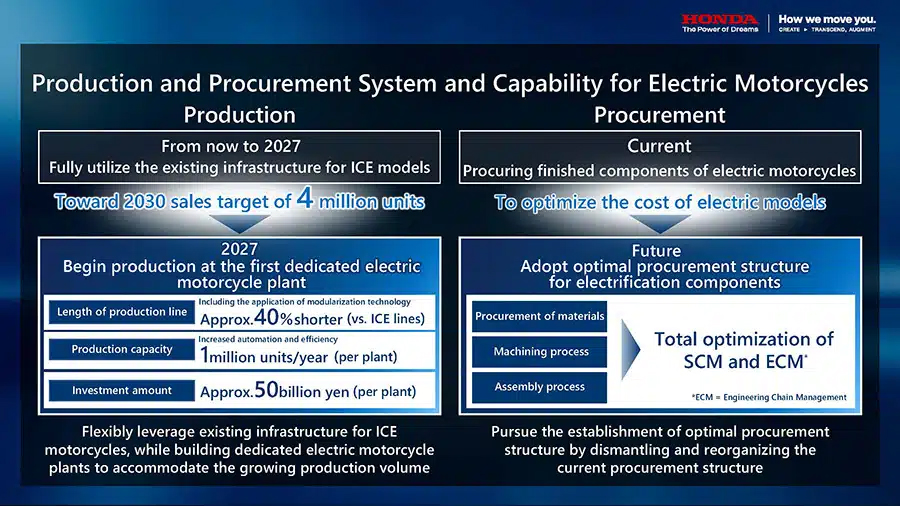B2B News | Source: press release Honda Motor | Honda Motor Co., Ltd. held a press briefing on electric motorcycle business initiatives, presented by Katsushi Inoue, Senior Managing Executive Officer and Chief Officer in charge of Electrification Business Development Operations, and Daiki Mihara, Head of the Motorcycle and Power Products Electrification Business Development Unit.
An overview:
Increasing 2030 global annual sales target of electric motorcycles to 4 million units
Honda aims to sell 4 million electric motorcycles by 2030, an increase of 500,000 from their previous target. They have already released new models in China and Japan/Europe this year, and plan to release a global model based on the SC e: Concept in 2024. By 2030, they aim to have a full lineup of over 30 electric models in categories such as sports, naked, offroad, kids’ bikes, and ATVs.
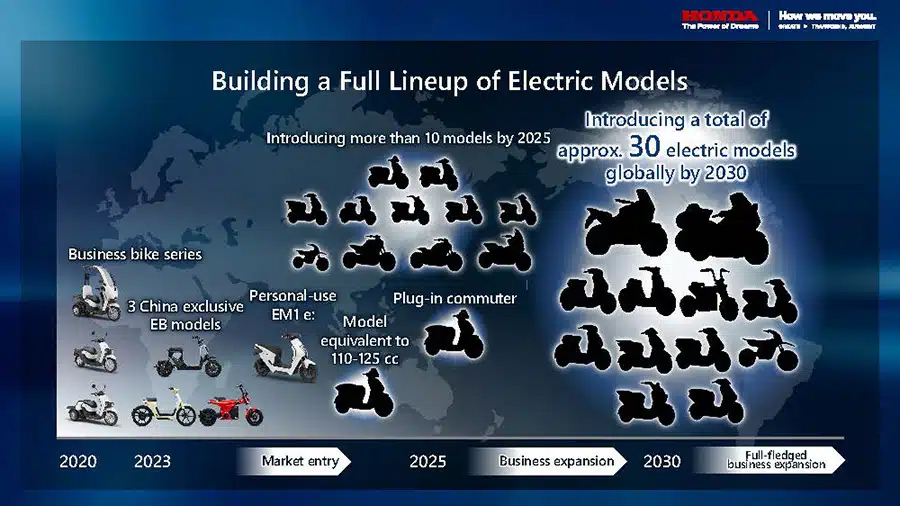
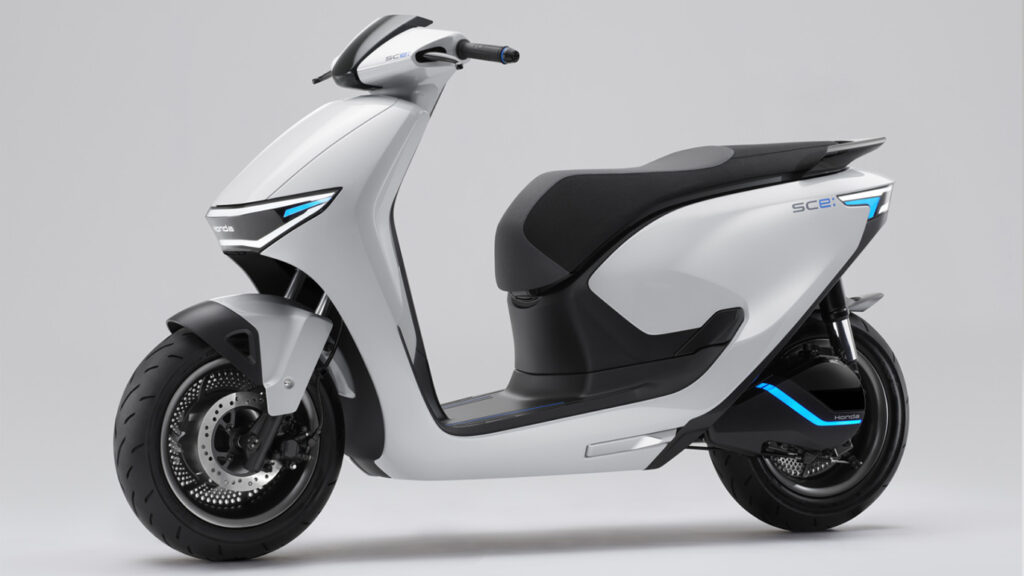
Further advancing motorcycle manufacturing with electrification
Along with its expertise in ICE motorcycles, such as platform sharing and basic functionality, Honda will apply connectivity features to their electric models for improved rider comfort and continuous advancements.
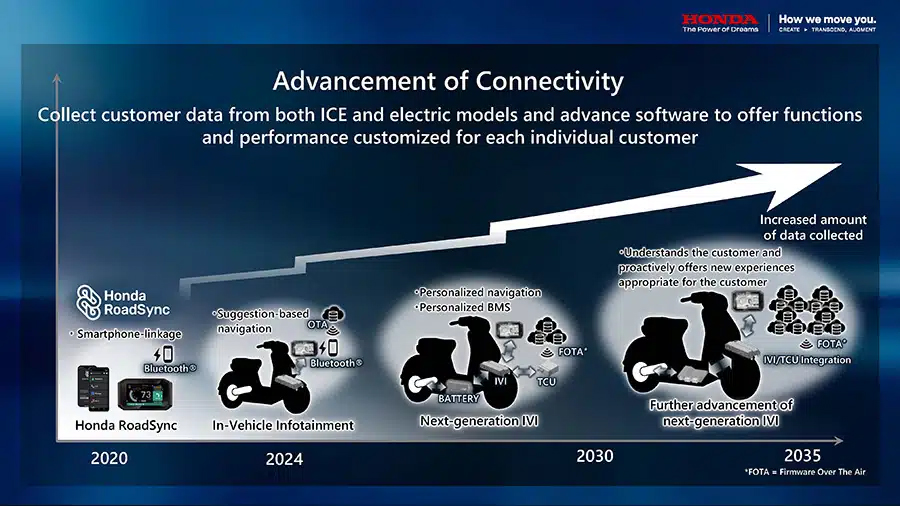
Honda has developed a modular platform for their electric motorcycles, with separate modules for the battery, power unit and chassis. This allows for a variety of models to be quickly introduced to meet the diverse needs of customers worldwide, while also providing cost advantages through modularization.
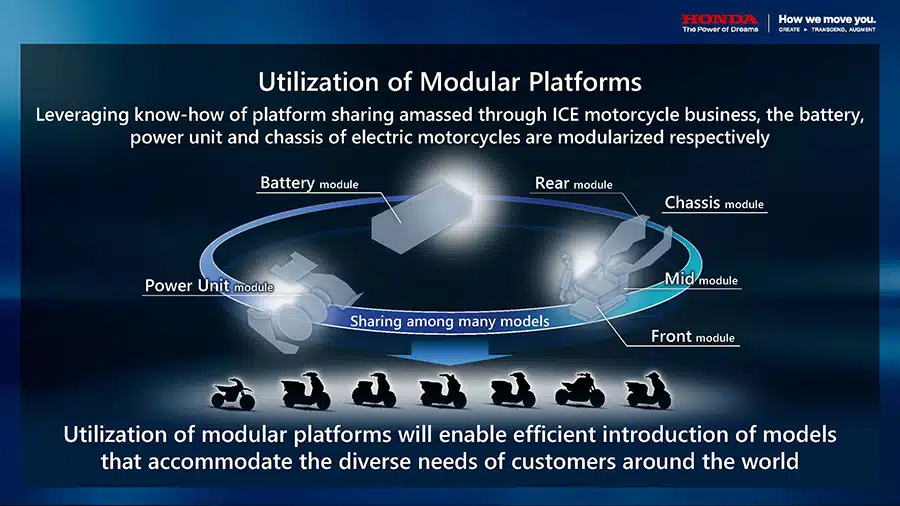
Electric motorcycles will have advanced connectivity, allowing for post-purchase software updates and new functions through OTA or other formats. Honda will improve their RoadSync service and add an IVI system with a navigation function that suggests nearby charging stations based on collected information to models launching in 2024.
In 2026, Honda will install a TCU (telematics control unit) and enhance its connectivity service for new models. Data from ICE and electric models will be used to understand customer needs and provide unique experiences. Additionally, Honda plans to use LFP batteries (lithium ferro-phosphate) in their products, with potential for adoption of all-solid-state batteries in the future.
New customer touchpoints in electric motorcycle business
Honda will improve customer convenience in the electric motorcycle business by offering online sales and establishing “Experience Centers” in major cities. These initiatives combine the strengths of existing dealerships (more than 30,000 dealership locations) and enhanced online services to provide customers with convenient and trustworthy purchasing options.
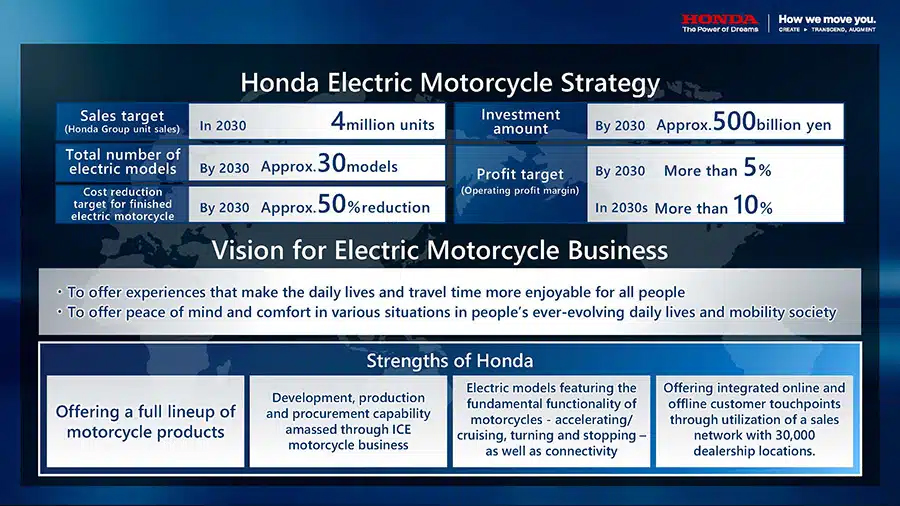
Reducing the cost of finished electric motorcycles by 50%
Honda aims to halve the cost of electric motorcycles by 2030 compared to current models. This will be achieved through plug-in models, optimized battery cells, and efficient procurement and production methods. By 2027, dedicated electric motorcycle production plants will be in operation globally. These plants will have shorter assembly lines and represent a 50 billion yen investment each with an annual capacity of 1 million units. Procurement will also be improved by purchasing component parts instead of functional components and reducing material and logistics costs for increased competitiveness.
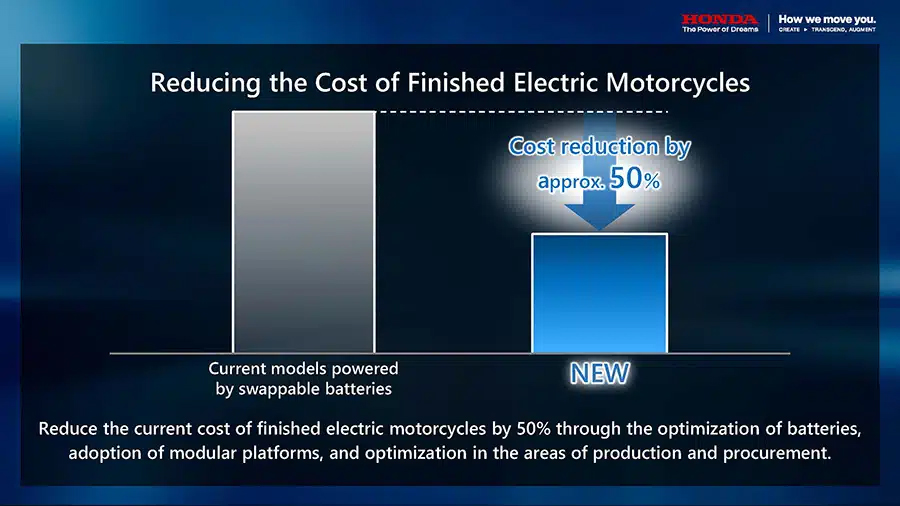
Investing approximately 500 billion yen over a 10-year period to maximize sales of electric models
Honda has plans to electrify its motorcycle lineup by investing 100 billion yen over the course of five years, starting in 2021. The company also plans to allocate an additional 400 billion yen towards this effort from 2026 to 2030, bringing the total investment to approximately 500 billion yen over a decade. In the future, Honda will continue to improve its competitive edge by expanding its production capabilities and implementing software technologies on a global scale in order to increase sales of electric motorcycles.
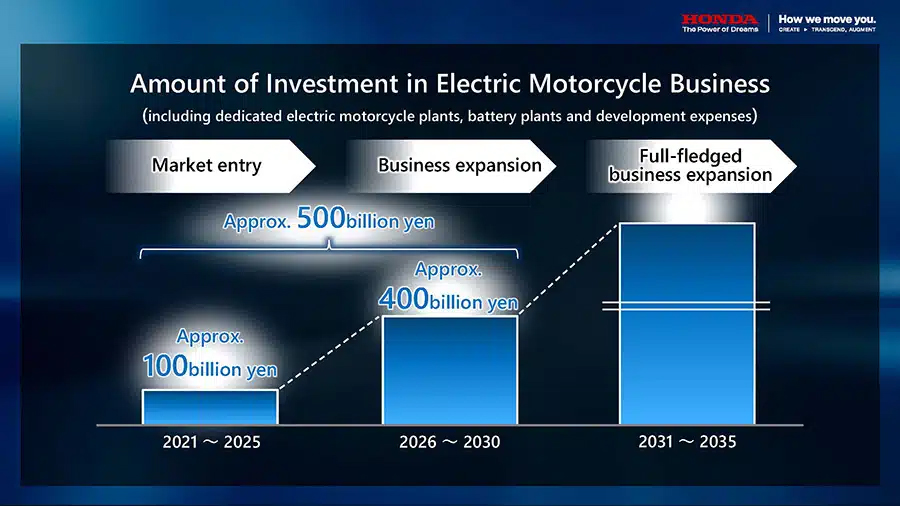
Aiming for more than 10% operating profit margin for electric motorcycle business in 2031 and beyond
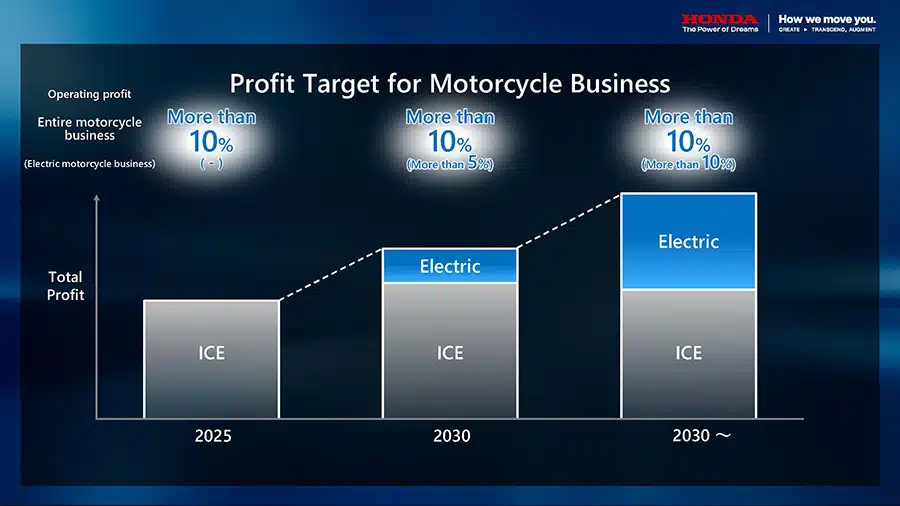
Honda’s goal for 2030 is to achieve an operating profit margin of over 5% for electric motorcycles and over 10% for the entire motorcycle business. In the future, they aim to reach a 10% profit margin for electric motorcycles and increase overall profits. High expectations are set for the electric motorcycles Honda will bring to customers in the coming years.
